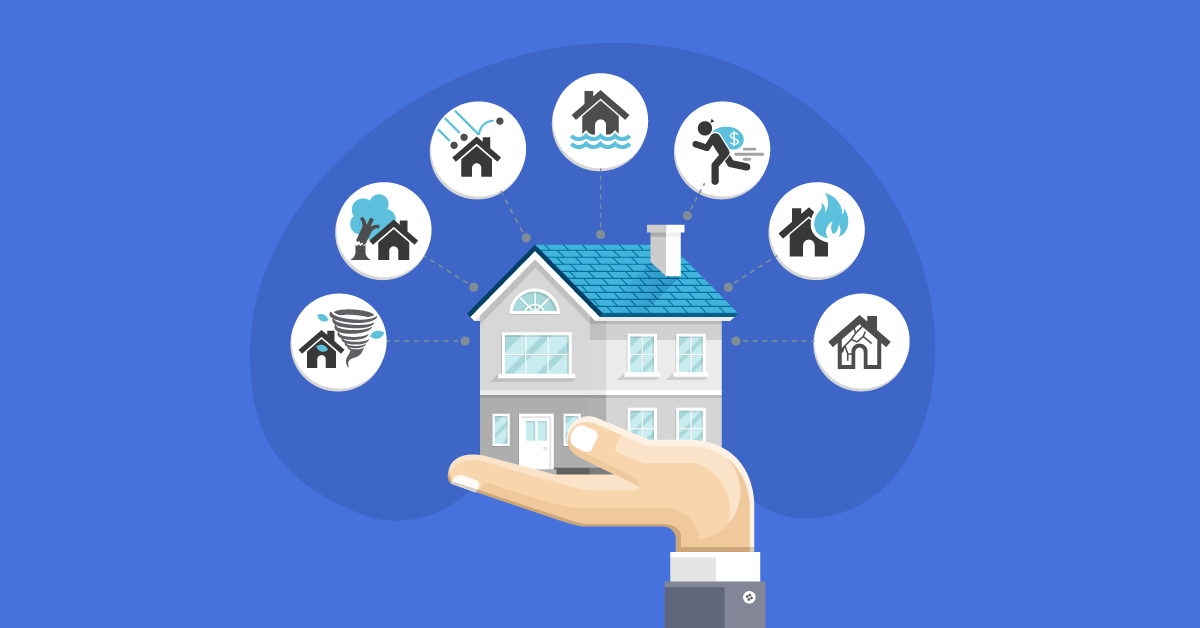Homeowners insurance provides financial protection against various types of damage and destruction. If you have a mortgage, you’re required to have this type of insurance to protect your lender’s investment, but you’re not required to stay with the same insurance provider for the life of the loan. If you’re considering switching home insurance companies, here’s what you need to consider and 9 tips for switching home insurance carriers.
Top Reasons for Switching Home Insurance Carriers
You don’t have to use the same home insurance company year after year. In fact, it can benefit you to shop around from time to time. These are some of the most common reasons for switching home insurance companies.
Savings Opportunities
Many factors influence the cost of your homeowners insurance policy. For example, a policy with a $500 deductible typically costs more than a policy with a $2,000 deductible as you don’t have to pay as much money before your insurance company starts paying on a claim. Your credit score, the condition of your home and the amount of coverage you have also influence the price of a homeowners insurance policy.
Even though insurance companies usually consider the same factors, some companies weigh each one differently, which means you may be able to get a better price if you switch from one insurer to another. It’s also common for insurance companies to offer lower rates to entice people to switch carriers.
Bundling Options
Bundling is the practice of offering a discount to customers who purchase more than one type of insurance product from the same company. Switching companies gives you the opportunity to bundle your policies together and take advantage of this type of discount.
Changing Coverage Needs
Once you buy your first homeowners insurance policy, your coverage needs will likely change at some point. For example, many people buy their first home when they’re single and then move to a bigger home when they get married. You may also need to increase your coverage limits if you build a garage or put an addition on your home. Switching insurance companies can help you get the best rate or access higher coverage limits when your situation changes.
Timing Your Switch Carefully
You can change your homeowners insurance policy or switch carriers at any time. However, some companies charge early termination fees, making it important to time your switch carefully. You also need to be careful not to cancel your existing insurance before your new policy is active.
If you have a mortgage, there can also be some mortgage-related consequences for failing to have coverage at all times. For example, if your lender finds out that you don’t have homeowners insurance, they may purchase a policy on your behalf and force you to pay for it. This is known as force-placed insurance. Your lender may even start foreclosure proceedings since you breached your mortgage contract by failing to have homeowners insurance at all times.
Tips for Changing Insurance Companies

If you’re considering switching home insurance carriers, here’s 9 things you need to do to make the switch without increasing costs or losing out on valuable coverage.
1. Check Your Current Policy
It’s difficult to determine if switching makes sense if you’re not familiar with the details of your current policy. Go through your policy documents and make note of your current deductible, monthly premium, coverage limits, exclusions and policy expiration date. Think about whether you need extra coverage for natural disasters or other risks. Then check your mortgage documents to find out if your lender requires you to have coverage that’s not included in your current policy.
2. Determine if Switching Makes Sense
Now that you know more about your current policy, you need to decide whether it makes sense to switch home insurance companies. Another company may offer a better rate, but that doesn’t do much good if it doesn’t offer the coverage limits you need.
If you have your homeowners insurance bundled with auto insurance, liability coverage or other types of insurance, you may also lose your discount on those products, increasing your overall insurance costs.
3. Plan the Switch Carefully
If it makes sense to switch, you need to plan carefully to avoid a gap in coverage. Check your current policy to find out if it has any early termination fees or other penalties for canceling early. If it does, you may want to wait until the end of the current term to make the switch.
4. Prepare to Request Quotes
When you request a quote, each insurance company will ask you to provide some information about yourself and your home. To ensure you’re prepared, take time to gather the following information:
- The date your home was built
- What materials were used in building your home
- Information on any renovations made since you bought the home
- The square footage of your home
- Information on any safety or security features in your home
- Details on any previous claims you’ve filed
You’ll also need to provide your contact information, tell the insurance company how many people live in your household and disclose whether you have any pets.
5. Request Quotes From Multiple Insurance Carriers
Now it’s time to request quotes. It’s important to request information from several carriers so that you can shop around and see which company has the lowest premium for the best coverage. To save time, use a rate comparison tool instead of requesting a quote from each individual company. Shopping around can help you save hundreds of dollars each year.
6. Review Your Options
Once you get the quotes you need, review all the prices and coverage details. Just because a policy is cheaper doesn’t mean it’s the best fit for your needs. You may want to choose something that costs a little more and gives you better insurance coverage.
7. Purchase a New Policy
When you’re ready to pull the trigger on a new policy, find out if you can bundle your current homeowners insurance with other types of insurance coverage to save money. If you need additional coverage, such as flood insurance, make sure it’s included in the new policy. Don’t cancel your old policy until you pay for the new one, as the new policy may not go into effect immediately.
8. Cancel Your Old Policy
Many policies auto-renew at the end of their terms, so you need to let your previous insurance company know that you want to cancel your old policy. Make sure you don’t cancel until the new policy is in effect, or else you’ll end up with a coverage gap.
9. Update Your Mortgage Lender
The final step is to let your mortgage lender know you’ve changed insurance companies. You’ll need to provide the new policy number, the insurance company’s name and other details about the switch to satisfy the lender’s requirements. You may also be required to provide a receipt showing you’ve paid the new premium.
You might also be interested in: What Homeowners Insurance Does Not Cover





